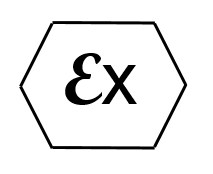Hazardous Locations in the European Union - ATEX Directive
Tech Note

Who Needs to Comply with the ATEX Directive?
Manufacturers of mechanical and electrical equipment, as well as protective systems, intended for safe operation in and around potentially explosive atmospheres and who wish to place their products on the market within the European Union need to comply with the ATEX Directive.ATEX Directive Scope
The Directive is commonly referred to as the 'ATEX' Directive ('Atmospheres EXplosibles'), but may also be called the ATEX Equipment Directive. The Directive applies to electrical and/or mechanical equipment used on the surface, below the ground and on fixed offshore installations. Specifically, the Directive covers:- All equipment intended for use in potentially explosive atmospheres and which are capable of causing an explosion through their own potential sources of ignition.
- Protective systems intended for use in potentially explosive atmospheres. Protective systems are defined as units which are intended to halt incipient explosions immediately and/or to limit the effective range of explosion flames and explosion pressures
- Components, which are defined as any item essential to the safe functioning of equipment and protective systems but with no autonomous function.
ATEX Groups and Categories
Equipment and Products that fall within the scope of the Directive are divided into two Groups:- Group I comprises equipment intended for use in mines, above and below ground.
- Group II comprise equipment intended for use in other locations endangered by explosive atmospheres.
Group I
- Category M1 - Equipment in this category is required to remain functional with an explosive atmosphere present.
- Category M2 - This equipment is intended to be de-energized in the event of an explosive atmosphere forming.
- Category 1 - Equipment in this category is intended for use in areas in which explosive atmospheres caused by mixtures of air and gases, vapors or mists or by air/dust mixtures are present continuously, for long periods or frequently.
- Category 2 - Equipment in this category is intended for use in areas in which explosive atmospheres caused by gases, vapors, mists or air/dust mixtures are likely to occur.
- Category 3 - Equipment in this category is intended for use in areas in which explosive atmospheres caused by gases, vapors, mists or air/dust mixtures are unlikely to occur or, if they do occur, are likely to do so only infrequently and for a short period only.
ATEX Zones
In addition to the ATEX Directive 2014/34/eu, which covers the safety requirements for equipment to be used in potentially explosive atmospheres, there is an additional European ATEX Directive, 99/92/EC. This is also known as the 'ATEX Workplace Directive' or 'ATEX 137' and highlights what employers must do to minimize the risk to workers from explosive atmospheres.ATEX 137 also classifies hazardous areas where an explosive atmosphere could form, by type of hazard, into the following 'Zones'.
Hazard - Gas, Mists or Vapors
- Zone 0 - A place in which an explosive atmosphere consisting of a mixture with air of dangerous substances in the form of gas, vapor or mist is present continuously or for long periods or frequently
- Zone 1 - A place in which an explosive atmosphere consisting of a mixture with air of dangerous substances in the form of gas, vapor or mist is likely to occur in normal operation occasionally.
- Zone 2 - A place in which an explosive atmosphere consisting of a mixture with air of dangerous substances in the form of gas, vapor or mist is not likely to occur in normal operation but, if it does occur, will persist for a short period only.
- Zone 20 - A place in which an explosive atmosphere in the form of a cloud of combustible dust in air is present continuously, or for long periods or frequently.
- Zone 21 - A place in which an explosive atmosphere in the form of a cloud of combustible dust in air is likely to occur in normal operation occasionally.
- Zone 22 - A place in which an explosive atmosphere in the form or a cloud of combustible dust in air is not likely to occur in normal operation but, if it does occur, will persist for a short period only.
- Zones 0 & 20: Category 1 Equipment only
- Zones 1 & 21: Category 1 or 2 Equipment
- Zones 2 & 22: Category 1,2 or 3, Equipment
http://www.dataforth.com/certifications-for-signal-conditioning-products.aspx
Was this content helpful?
Thank you for your feedback!






